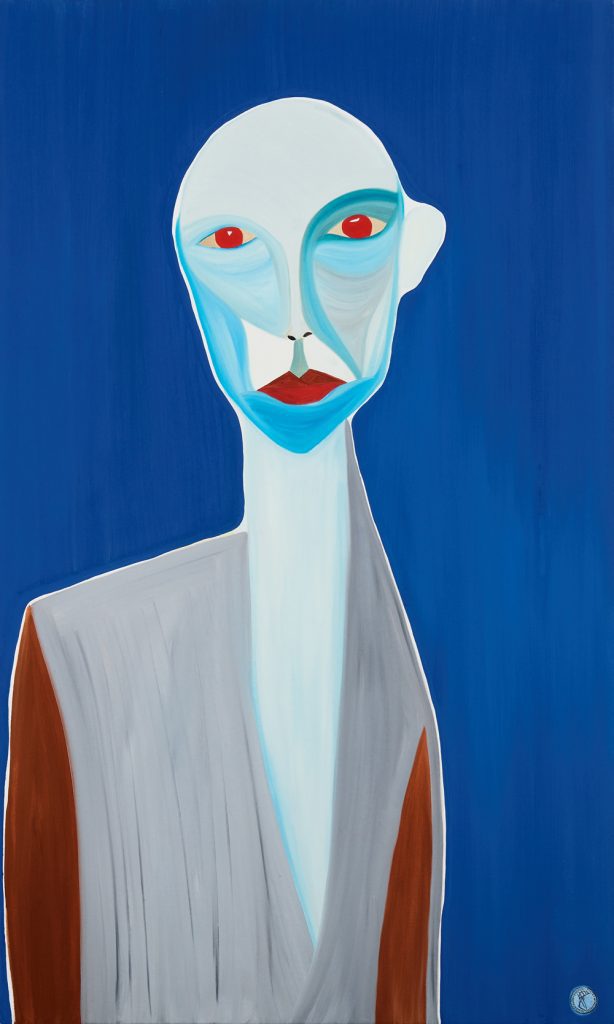‘If we have retained an element of dream in our memories, if we have gone beyond merely assembling exact recollections, bit by bit the house that was lost in the mists of time will appear from out the shadow. We do nothing to reorganise it; with intimacy it recovers its entity, in the mellowness and imprecision of the inner life’ – Gaston Bachelard The Poetics of Space (1957)
‘To think is to ignore (or forget) differences, to generalise, to abstract’ – Jorge Louis Borges “Funes the Memorious” (1942)
[dropcap style=”font-size:100px; color:#992211;”]S[/dropcap]pace-time is unbiased; it affects everything. From infinitely immense conceptions to the most microscopic, from complicated scientific conundrums to the most common daily experiences.
We feel it. We are it. And yet, no one can really explain it. It doesn’t take an astrophysicist to understand the constant balancing and juggling of priorities and commitments we all have: being on time, being present, making time for something, giving someone space, paying rent and bills ad infinitum. Still, despite this magnetic-like separation of time and space in our practical consciousness it appears, consistently, that the deep
cooperation we feel between these forces is translated most intimately and accurately by great artistic work and our sharing in that work. It’s possible to say that the unified field theory science attempts to make objective and factual has been proven time and again, albeit in a wholly subjective and personal way.
The proliferation of these concepts and realities by artists becomes a creative knowledge platform. This platform is a historic base for uncovering and reimagining an endless variety of personal yet shared truths that can never be systematically and repeatedly proven in the way science demands, for space-time itself is an ever-changing thing requiring dramatic reassessment in each moment, the keen artist ever ready to incarnate the contemporary face of continuum. Expressed here are a number of artists and writers roles in forging these elements together to render space-time a visible, acute and accessible entity; specific to and for the inner space of all beings, helping us bust through and better negotiate and share the underpinning wonders of daily reality.
——
Inside König Galerie Berlin, on the afternoon of October 11, 2018, the reader would have seen Alicja Kwade’s exhibition Entitas: a composed multiverse of rearranged organic, processed and industrial materials. Copper pipes were littered upon the gallery floor like semi-organised falling angels. Tree trunks, their wise, old bodies carved out with robotic tension stood static next to concrete-encased steel pipes that seemed to carelessly spit out little blue worlds. 3D printed stones lined the gallery floor, each one a more cosmetically perfected rendering than the last. All meditation upon these elements was relentlessly punctuated, disrupted and rearranged by the sound and rotation of two objects—a colossal stone and a copper station clock—that orbited above. Kwade’s juxtaposing objects detailed an abstract history of cultivation, development and human experimentation with the earth’s materials.
Every reference to organic material in the exhibition was somehow manipulated, reorganised or recontextualised until it fell out of place, becoming an absurd, hollow, defunct (yet
poetic) relic; static beneath the formidable, ever-moving force of space-time. And still it felt there was little judgment from the artist, but rather a concession given to inevitable human playfulness.
The loud ticking and rotation of the clock and stone filled the room with force. The repetitive movement of these objects was profound. It felt that regardless of humanity’s mutant adaptations of nature there was still an unwavering cooperation between space, time, body and soul, where the secret gems of pure reality momentarily crystallise before melting down upon any attempt to fully realise and organise the clarity of the moment. There is value in experiencing these fractional slices of ephemeral, holistic connection, even if they be entirely fractional & fleeting; they live forever in the regenerative soup of inspiration, daydreams and artistic continuum.
Only upon later reading of the exhibition literature was a quizzical chord struck:
‘Everything that surrounds us as human beings—all the things and objects we consider to be solid, firm matter—is, strictly speaking, composed of nothing. The surface of Carrara marble, or a diamond, for instance, may appear to have hard and massive structures, but only a series of atoms form them, which in turn contain: nothing. If you imagine a single atom inflated to the size of a football stadium, it is only the size of a grain of rice in the middle of the playing field—the core nucleus—that has a mass. The remaining area is nothingness.’
(Text: Timon Karl Kaleyta. Translation: Katerine Niedinger, Konig Galerie, 2018)

Disquiet, 2018, Oil on Canvas, 150cm x 90cm © Trate
This ‘nothingness’ is not nothingness at all. Rather, imagine this spacious area within the atom as an open yet highly ordered place. Imagine that precious grain of rice as the visible expression of an invisible order: a sublime joke springing from the realms of suppressed embarrassment, a one-line poem; the final memory of a dying mind. Imagine the nothing as the very platform that provides the information for a grain of rice to be a grain of rice. Imagine a visible, definitive structure being conjured out of the weightless, airy pudding, the atom now formed, ready to coalesce and bond with fellow atoms for the purposes of assembling strength, union and influence, i.e. to become an object in nature, impervious to the threats that would destroy it were it a single, fluid atom, alone. It is in connection to other vulnerable atoms that something empty can become marble. ‘Only’ a series of atoms? How insulting. It would seem becoming marble takes a momentous love-in. How do we know marble is not made of such football field atoms in fact?
Kaleyta’s metaphor also requires the spatial concept of the football field, which has a definitive boundary. So what is to be said about this perimeter? Is that a something that somehow holds in a nothing? Would the nothing escape without a boundary? And therefore, how could nothing escape or move if it were nothing? Why does nothing need containment?
Would it not be better to describe this apparent nothingness as the ‘unknown’ or ‘unseen’ or more curiously, as the ‘invisible design platform’?
Or, let’s assume this space truly is a nothingness. It is only through the visible ‘something’ that we are even able to constitute an understanding of the adverse ’nothing’ and therefore these concepts (much like space and time) are symbiotic, even if sometimes imbalanced. Hence, an apparent nothingness is not nothing because it has function in designing and/or allowing (giving space to) the something. Together they connect, build, breathe, survive, become marble, etc. Here we begin to understand the connective function in shaping greater realities than one being might dare to imagine possible.
——
The artist works from this invisible platform to make space-time visible, intimate and relevant on the shared plain. It will be useful in continuing this line of discourse to analyse Jorge Louis Borges’ short story, ‘“Funes the Memorious”.
…continued in part 2
Precious Nothing Part 1 / Part 2 / Part 3 (Coming next week)
Read more on Art, Time and Space in Trebuchet 6
Nicholas Millen is an artist, gallerist and writer currently living and working in London.























